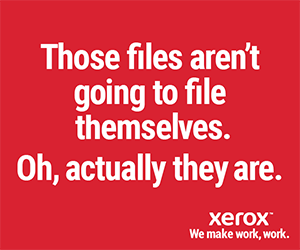
Robotic Process Automation (RPA), the fastest-growing segment of enterprise software globally, according to Gartner, is on pace to grow 63 percent this year reaching more than $1.3 billion in sales worldwide. Those in the industry, therefore, can be excused if they begin to think the questions the market has about the technology have all been answered.
There are misconceptions about RPA, though, that have lingered for years. And, for many organizations that have little or no experience with the software, those misconceptions can persist despite the best efforts of vendors and educators to address the issues. So, if you’re a prospective RPA user who needs the record set straight or a vendor who will nearly certainly hear these objections from your prospects, here are five stubborn myths that won’t go away.
Robots will replace humans
For companies exploring automation via RPA, morale of the rank-and-file can take a hit when they hear it is under consideration. To many, automation means job cuts. But, while it’s true many business tasks currently performed by human employees can be automated with RPA, the fact is any kind of artificial intelligence still needs training from humans. There are already new roles being created in the RPA environment where humans orchestrate, monitor and train the robots, and in time, more opportunities will emerge.
Most companies implementing RPA intend to benefit from the higher-level thinking humans are capable of that bots are not. By automating high volume tasks, RPA only reduces the need for repetitive human effort. Rather than removing humans from the workplace, many organizations have found RPA enables staff to focus on creative problems that provide more value to the company than the rote tasks that consumed much of their day in the past.
[um_loggedin]
These technologies are therefore not entirely independent from humans nor are they currently able to reproduce the higher-level thinking of which humans are capable.
RPA Can Automate Anything
RPA excels at taking rote, non-complex, repetitive tasks out of the hands of humans, freeing them for more value-added work. But identifying automation opportunities that would most benefit a company is not easy. And sometimes, RPA isn’t a suitable alternative at all, even for seemingly simple processes.
Some things a human finds simple may not be simple for a bot to accomplish. Unless there is an exact set of rules a bot can follow, there is no guarantee RPA can automate a specific process. If all required human knowledge can be captured in a bot or all human discretion removed from a process then RPA is appropriate. If not, RPA may not be right, even is the process may appear simple.
Additionally, some organizations’ systems do not easily integrate with the products offered by certain RPA vendors. It is important to know with certainty what a prospective RPA vendor’s product can or cannot do.
It’s ALL about cost reduction
Companies that implement RPA intelligently can certainly realize cost savings, especially organizations that have significant processing costs (financial services, insurance, etc.). But, while cost reduction is one effect of RPA, it’s not the main reason businesses choose it. The key drivers for purchasing RPA include increased productivity due to time savings and error reduction, liberating staff to be deployed on higher value projects, and generating greater predictability.
Also, because software robots capture and log all activities, the data yielded makes reporting, analysis and compliance significantly easier and more accurate. Furthermore, robots can easily be scaled up and down, which is very important for processes where flexibility and scalability are required.
Calculating ROI is simple
Building a business case for a particular bot often appears deceivingly simple. Examining transaction counts, cycle times, exception rates, and other variables may be a good start. But these metrics are often insufficient to understand overall benefit.
Also, many RPA consulting experts recommend widening your perspective when considering total cost of implementation and ownership. In addition to licensing and maintenance, companies must figure infrastructure, operations/support personnel and related elements of the solution when calculating ROI.
Also, not all bots are created equal from the perspective of risk. As part of an ROI calculation, consider using a risk framework to address potential challenges in creating bots or maintaining benefits over a relevant time horizon.
Without a disciplined approach to calculating ROI, your bots may not meet the desired benchmarks that represent a successful implementation.
RPA Is Not Applicable to My Industry
The earliest adopters of RPA technology were banking and finance and, to this day, many in other sectors who are leading their companies through digital transformation still think the technology is meant mainly for financial institutions.
While RPA does have a proven track record in banking and finance, other industries have realized incredible efficiencies by implementing RPA. IT, healthcare, insurance, manufacturing and shipping, transportation and logistics, retail, telecommunications, government and others have begun automating business processes with RPA. RPA startups are even serving niche industries as disparate as fertility and mobile app testing.
[/um_loggedin]
[um_loggedout]
[/um_loggedout]


